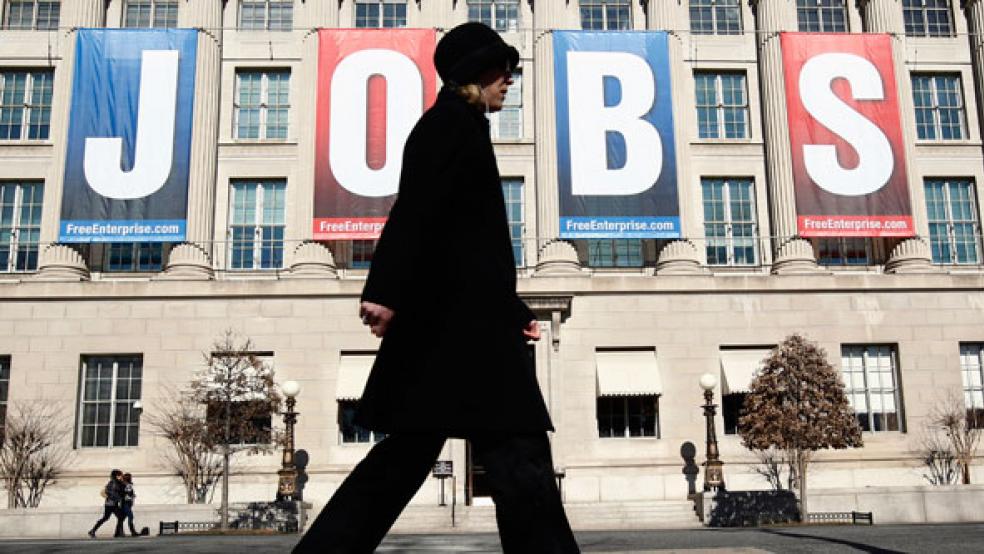Much has been made of last Friday's speech by Federal Reserve Chair Janet Yellen. The key takeaway was that the pace of rate hikes — expected to start in June or September — could be reversed, stopped or slowed should the economy falter or inflation fail to recover. The latter is looking more and more likely, increasing the odds that the Fed will have to be satisfied with a "one-and-done" or "none-and-done" policy tightening cycle this year.
Part of the problem — which was reflected in modifications to the Fed's estimate of "full employment" in its latest forecast — is that it's taking longer than usual for wage inflation to show up. As a result, the Fed’s forecasters knocked down the full employment level of the unemployment rate to a range of 5.0 percent to 5.2 percent, down from 5.2 percent to 5.5 percent previously.
Translated, this means they believe more progress in the labor market will be required to start putting upward pressure on wages. And based on their unemployment rate projections, we may not see this until as late as 2017.
Related: 2015 Stock Strategy: Sell in June and Go Away?
If so, despite the removal of the language about patience from their last policy statement, the Fed may be forced to wait before raising rates for the first time since 2006 from their current levels near zero percent. Yellen has said that as long as she is "reasonably confident" higher wages are coming, she will act.
But the data is far from confidence-inspiring.
The February inflation data contained in the personal income report released earlier this week showed that the deflator on core personal consumption expenditures, the Fed's preferred inflation measure, remains stuck at 1.5 percent, half a percentage point below their 2.0 percent target.
Moreover, it's been hovering at this level for the past 10 months. The worry is that the drop in overall PCE inflation, indicated by the blue line in the chart below, will have a dampening effect in the months to come as the drop in energy prices trickles down into the prices of goods and services throughout the economy.

This could already be happening in a small way: Ed Yardeni of Yardeni Research notes that the three-month percentage change in core PCE inflation, on a seasonally adjusted annual basis, fell in January to a level not seen since the start of the recession. It rebounded slightly for February but remains at levels last seen in 2010.
Related: Bernanke Was Right, Interest Rates Aren't Going Anywhere
Additional downside could come from renewed weakness in energy prices, something I recently wrote about. Already, gasoline futures have broken out of the three-month uptrend that saw prices rebound nearly 61 percent from their January low.

The accumulation of crude oil in onshore storage facilities has been widely noted. Perhaps as soon as June, these tanks will reach their limit, sending a glut of current production into the cash market.
If inflation is really going to heat up, supply-side capacity constraints would need to kick in. But we're not close to that yet: Economists at J.P. Morgan estimate that the global economy can grow at a 3.0 percent annual pace through 2017 before reaching full capacity.
Related: Car Sales Are on Pace to Do Something They Haven’t in 50 Years
Yellen is mindful of the asymmetry problem she faces — something discussed in a recent research paper by dovish Chicago Fed president Charles Evans. With interest rates having been so low for so long and the Fed's balance sheet already greatly expanded my multiple bond-buying stimulus programs, Yellen and her colleagues must be absolutely sure the economy is on sound footing before tightening.
If they pull the trigger too soon, they risk a slowdown that will be difficult to reverse with so many monetary policy tools already operating near their maximums. This could lead to market instability or even panic. And it's caused some, such as hedge fund manager Ray Dalio, to worry about a repeat of the 1937 Great Depression double-dip caused by premature policy tightening.
On the other hand, as I discussed a couple of weeks ago, waiting too long carries its own risks as well. The Fed is caught between a rock and a hard place. And the stakes couldn't be higher.
Related: The Middle Class Is Struggling in All 50 States
Stocks have been in a stasis in recent weeks as investors deliberate over what the Fed will do next. And if you look at the NYSE Composite Index, U.S. stocks haven't gone anywhere since last summer, a sharp contrast to the stimulus-fueled rallies we've seen across Asia and Europe so far this year.
Something similar could be catalyzed here at home on indications the Fed's has no choice but to be patient. A weak March payroll report on Friday could be just the thing to spread this line of thinking. Indeed, the private-sector ADP payroll report has already slowed, on a month-over-month basis, for each of the last four months, with March job gains totaling 189,000, below the consensus expectations of 225,000.
If job growth, which has recently been running at its hottest pace since the 1990s dotcom boom, slows then Yellen wouldn't have any reason to take action on rate hikes as low-flation continues to bother.
Top Reads from The Fiscal Times:





